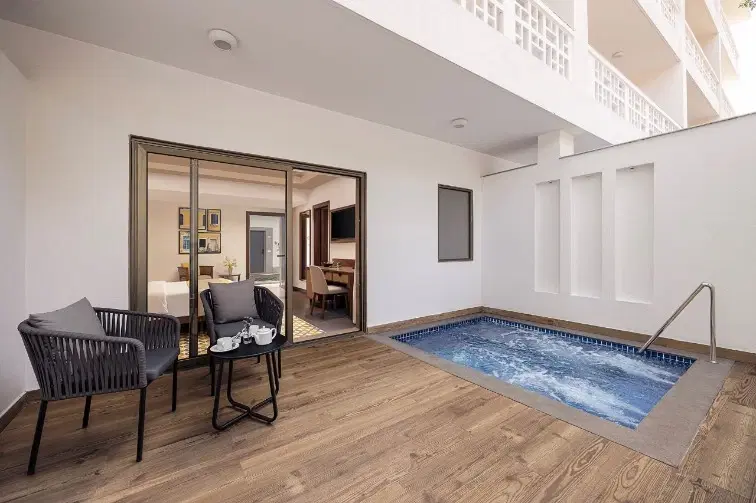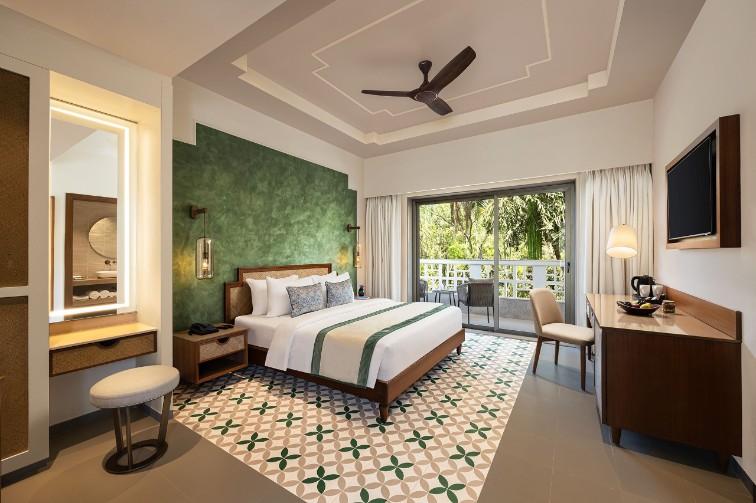
Hotels
•04 min read

Chitrakoot captivates visitors with its serene beauty, rich cultural heritage, and stunning landscapes that seem to change with the seasons. Visitors soon discover that perfectly timing their trip is key to unlocking the magic of this destination. In this guide, we break down the best time to visit Chitrakoot to help you make the most of your journey. Whether you're drawn to the moderate chill of winter, the rejuvenating monsoon showers, or the quieter summer months, you'll find insights on weather conditions, seasonal attractions, and helpful travel tips for each period.
Chitrakoot experiences a blend of seasons characterized by three distinct periods: summer, monsoon, and winter. Each season offers its own advantages and challenges for exploring this culturally rich town. The weather influences the overall travel experience, from ease of sight-seeing to comfort during outdoor adventures. In winter, the cooler temperatures make for relaxed walks along ancient paths and temple visits. The monsoon brings lush greenery, dramatic waterfalls, and a vibrant natural scene. While summer might be hotter, it offers a unique glimpse into spiritual routines, especially appealing to budget travelers and pilgrims.
The winter months are considered the optimal period to visit Chitrakoot. The mild and pleasant climate provides a comfortable setting for exploring outdoor attractions and ancient temples such as the Bharat Milap Temple and Gupt Godavari. Comfortable weather means visitors can wander through historical sites without the discomfort of extreme heat or heavy rains. Moreover, winter brings along numerous cultural events and festivals, which add to the town's charm during this period.
The monsoon season casts a spell of rejuvenation across Chitrakoot. The rains transform the region into a verdant paradise, and waterfalls like the Chitrakoot Falls show off their full splendor. This season is perfect for nature enthusiasts who love to witness dynamic landscapes and lush vegetation. For those planning a visit during the monsoon, it is wise to carry rain gear and stay updated on local road conditions. While some outdoor activities may require additional planning, the reward is a tranquil, refreshed environment that highlights the natural beauty of Chitrakoot.
Although summer may not be the first choice for most visitors due to the high temperatures, it appeals to a niche group of travelers. Budget-savvy tourists and spiritual pilgrims often choose this time for its quieter atmosphere and favorable travel deals. Visitors can take advantage of the early mornings and evenings to visit popular attractions without facing intense heat. The summer ambiance provides a reflective and spiritual experience for those who are dedicated to pilgrimage and self-exploration.

Each month in the winter period offers a blend of cultural events and comfortable weather. November kicks off with festive energy, as the cooler days invite visitors to explore ancient sites and enjoy local hospitality. December and January amplify the experience with the celebration of traditional festivals and immersive temple tours, while February brings lingering cool temperatures that appeal to late-winter travelers. With a well-balanced mix of sightseeing, cultural immersion, and natural beauty, this period is ideal for families, groups, and solo travelers alike.
This period stands out for its breathtaking natural transform. The monsoon rains fill up the rivers and waterfalls, creating picturesque sceneries that are perfect for photography and nature walks. July introduces a fresh burst of life in the landscapes, while August reaches the peak of the waterfalls' vibrance. September is a time of transition as the rains ease, leaving behind a renewed environment that beautifully melds nature with the ancient heritage of the surroundings.
For travelers who prefer fewer crowds and discounted rates, March and June are excellent off-season options. Although the temperatures may rise, these months offer quieter pathways and unique insights into local life. Early morning and late evening visits can be particularly rewarding, allowing visitors to appreciate the spiritual ambiance of temples and natural sites without the bustling activity seen in peak months.
Chitrakoot boasts a variety of attractions tailored to every season. In the winter, take a stroll through temples like Bharat Milap and the serene Gupt Godavari cave. Monsoon enthusiasts should not miss the phenomenal Chitrakoot Falls and sharp, rejuvenated landscapes that invite reflective walks and photography. During the summer, the focus shifts towards spiritual tourism and quieter moments in nature where pilgrims can revel in the town's deep-rooted religious significance.
Accommodations in Chitrakoot range from luxury hotels to budget-friendly lodgings. In winter, many top hotels offer cozy rooms with modern amenities and proximity to major attractions, ensuring that travelers are never far from the action. During the monsoon and summer, budget travelers can find guesthouses that provide a warm, local experience while still offering comfort and convenience. Regardless of the season, each place to stay in Chitrakoot is designed to enhance the overall travel experience, allowing guests to focus on exploring this historic destination.
When planning your Chitrakoot trip, keep weather conditions in mind. Pack comfortable clothing according to the forecast: layers for winter chills, waterproof gear for the monsoon, and lightweight attire for the summer heat. Plan your itinerary around the best times to explore outdoor attractions and consider early morning visits when the weather is most favorable. These simple tips can significantly enhance your overall experience while ensuring that you are well-prepared for the different climatic conditions.

Did You Know?
Chitrakoot is often referred to as the 'Hill of Many Wonders' due to its rich association with the Ramayana and its natural beauty. Visiting during the monsoon season unveils the majestic Chitrakoot Falls in their full glory, making it a must-see for nature lovers.
Two to three days are sufficient to explore Chitrakoot’s major attractions, including temples, waterfalls, and scenic spots.
Winter (November to February) is the best season to visit Chitrakoot for pleasant weather and comfortable sightseeing.
The best time to visit Chitrakoot’s waterfalls, such as Chitrakoot Falls, is during the monsoon season (July to September) when they are at their most vibrant.
Yes, Chitrakoot is worth visiting for its spiritual significance, natural beauty, and serene ambiance, especially for those interested in history, culture, and nature.
Chitrakoot offers a range of accommodations, including budget hotels, mid-range options, and top hotels with modern amenities.
Chitrakoot is a destination that wears many faces, each marked by a distinct weather pattern and cultural vibe. From the comfortable and festive winter months to the lush, vibrant monsoon season and even the quiet, reflective summer period, this guide has explored the 7 best times to visit Chitrakoot. Each period holds unique attractions, whether it is spiritual tourism, scenic natural beauty, or cultural festivities. By understanding Chitrakoot weather conditions and planning your itinerary around seasonal highlights, your visit becomes an immersive experience in both history and nature.